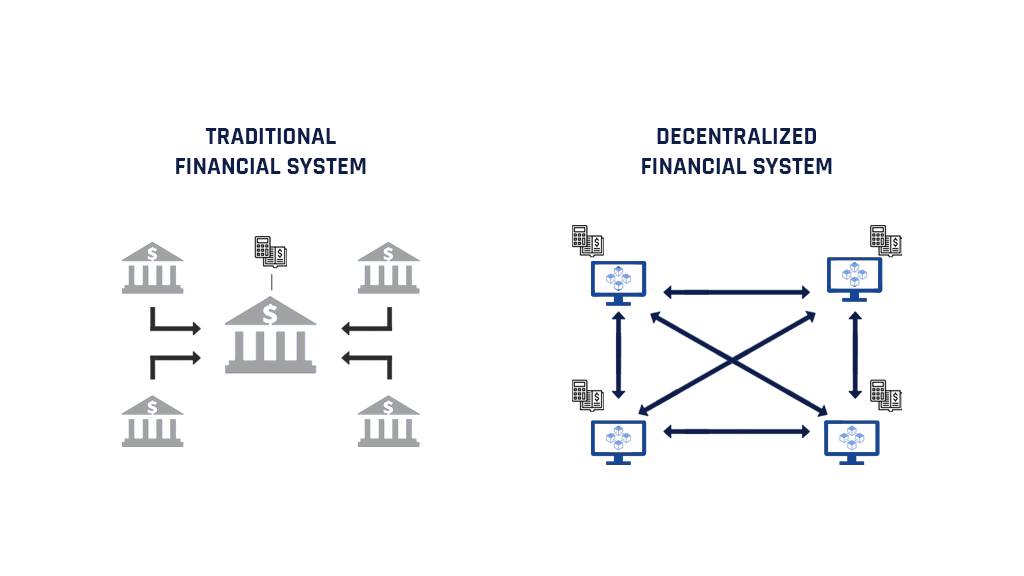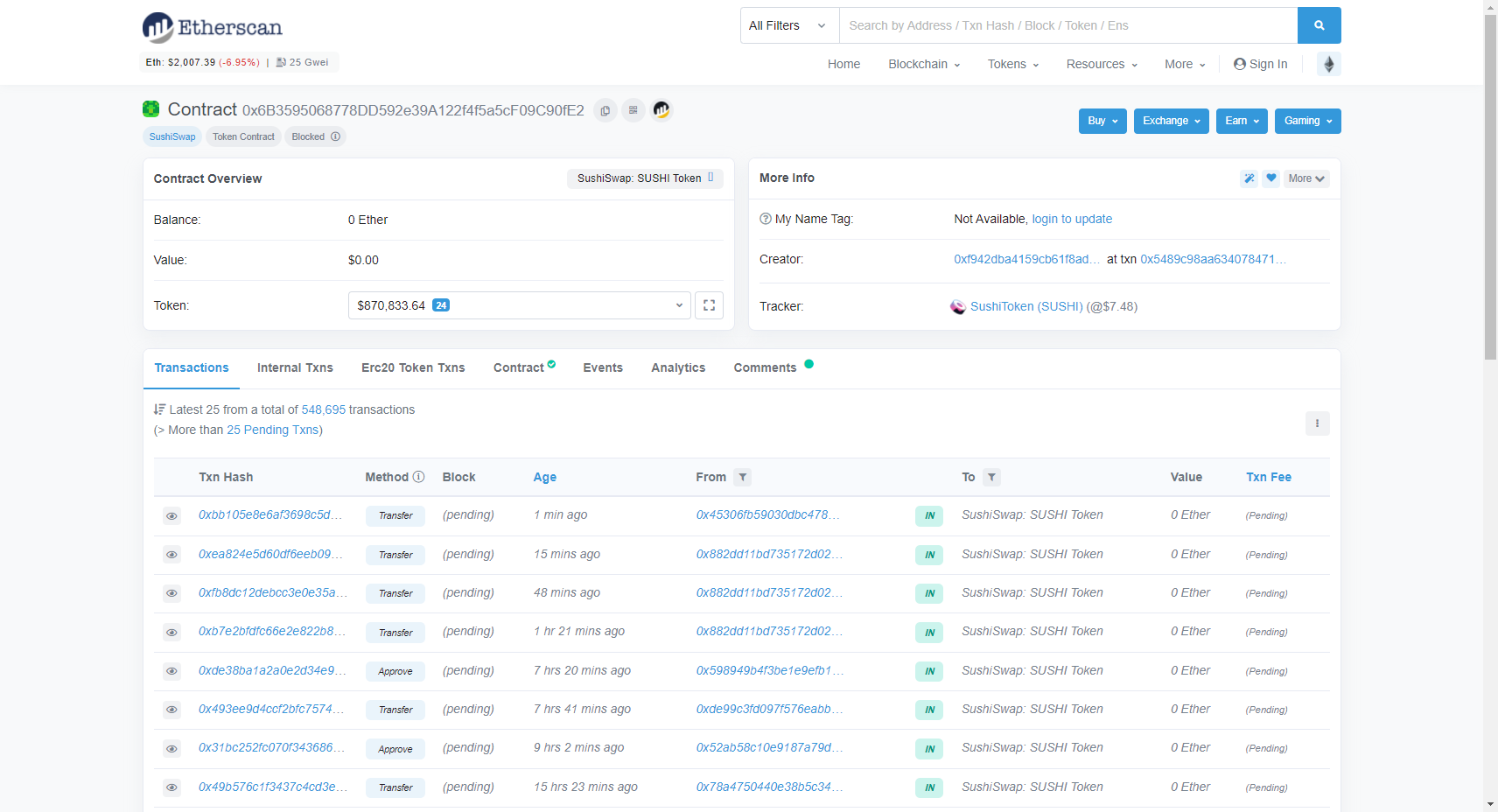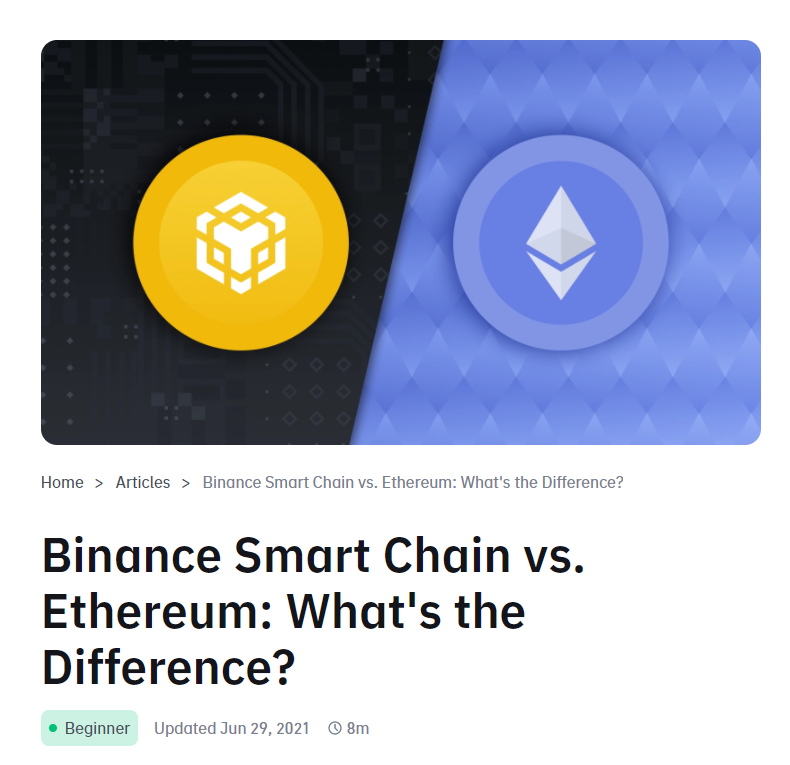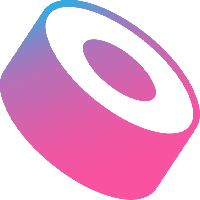Introduction
Blockchain is not dead. Actually, quite the contrary is happening in the past year. There are more and more interest and it’s gaining a lot more traction than before. A big portion of this growth is due to “DeFi” AKA Decentralised Finance applications. From the hyped cryptocurrencies, we are now seeing the new next wave of this transformation as we see more financial products being developed: lending, exchanges, yield farming, and pools just to name a few. It is a hot topic right now and there are a lot of demand in this space. There are also a lot of opportunities to start creating your own innovative products as part of this wave.
 Warning: Cryptocurrencies involve risks, so do your own research before investing.
Warning: Cryptocurrencies involve risks, so do your own research before investing.
Why DeFi and blockchain?
There are a lot of locked money right now in DeFi. As of now, we have at least 54 Billion dollar worth of locked assets that are circulating just in this vertical.
 Image taken from: https://defipulse.com
@ 13/July/2021
Image taken from: https://defipulse.com
@ 13/July/2021
Developer / Technology
- A lot of demand to DApps developers.
- A lot of saturation in open source community.
- The tools and technologies are improving in a rapid pace.
Startup Founder
- An opportunity to start a new product or service offering.
- Opportunities to raise capital or funding.
- The market is still maturing and open to innovation.
Works in Finance
- DeFi “has been” disrupting traditional financial products
- Opportunity to adapt and innovate.
- Leverage DeFi side-by-side with your existing products.
What is DeFi or Decentralized Finance?
 Image taken from: Stably blog on Medium
Image taken from: Stably blog on Medium
DeFi is similar to how we call Financial Technologies as “FinTech”. It’s an industry vertical use of decentralised technologies that are specific to financial products. This includes exchanges, lending & borrowing, interests & compounds, staking & liquidity pools, and many more.
One of the key advantages of DeFi is the decentralised nature of it. Compared to traditional banking and financial institutes, you need a “middle man” in order to do transactions. With the use of decentralised technologies, no central entity have “control” on the network of exchanges and transactions. This allows more efficient and straightforward transactions across individuals.
What makes a product DeFi?
Throughout the years, there has been so many use cases of blockchain and decentralised technologies. There are also a lot of applications that seems to be just partially decentralised. These are some of the properties to look at in order for a product to utilise these revolutionary movement.
Transparency
 SushiSwap contract on Ethereum
SushiSwap contract on Ethereum
Transparency is one of the most important reason on why you would even want to use blockchaind and decentralised technologies. With these technologies, you can have an end to end trace of all the transactions that are happeing within the chain and the DeFi apps. A lot of DeFi apps are also open-sourced in order to gain reputation and peer review from the wider community.
Accessibility

Image taken from Forbes: How DeFi is Reinventing The World’s Financial System
Unlike traditional banking products, you need to be in a certain category or must have specific things in order to do transactions. A DeFi should be inclusive to all users all over the world regardless of your ethnicity, race, religion, gender, and to an extent your financial background.
Accountability

Althoguht it is totally optional, as the founder of Bitcoin, Satoshi Nakamoto still remains anonymous; the world is changing. It is intrinsic in our nature to trust people, brand, and entities. As there has been a lot of scams and risks in this industry, having to know the founders and their background would gain confidence for people to use your DeFi product.
Interoperability
 Image taken from Binance Academy Article
Image taken from Binance Academy Article
This is a hard technical problem to have. Interoperability means your asset or product can work to various blockchain networks, or supports multiple types of coin, and even support non-blockchain data. I’ve dealt with these and I’m telling you it’s not one of the easiest thing to work on. There are a lot of performance considerations as well as overall user experiences.
Use Cases and Popular DeFi Apps
There are a lot of popular use cases and DeFi Apps lately. Although some are more dominant than others in terms of locked asset, there are still a lot of opportunities to capture more market. Here are some of the popular DApps (Decentralised Apps) out there that are categorised as DeFi.
Exchanges
UniSwap
is a fully decentralized on-chain protocol for token exchange on Ethereum that uses liquidity pools instead of order books.
 https://uniswap.exchange
https://uniswap.exchange
SushiSwap
is a fully decentralized on-chain protocol for exchanging tokens through a process of automated market-making (AMM) which uses ’liquidity pools’ rather than an orderbook.
 https://app.sushi.com
https://app.sushi.com
PancakeSwap
is a decentralized exchange built on Binance Smart Chain.
 https://pancakeswap.finance
https://pancakeswap.finance
Lending
Compound is an algorithmic money market protocol on Ethereum that lets users earn interest or borrow assets against collateral. Compound Labs %28@compoundfinance%29 | Twitter https://app.compound.finance/
Aave
(from the Finnish word for “ghost”) is an open source non-custodial protocol on Ethereum for decentralized lending and borrowing
 https://app.aave.com/
https://app.aave.com/
MakerDAO
is a decentralized credit platform on Ethereum that supports Dai, a stablecoin whose value is pegged to USD.
 https://oasis.app
https://oasis.app
Assets / Yields
Synthetix
is a decentralized platform on Ethereum for the creation of Synths: on-chain synthetic assets that track the value of real-world assets.
 https://staking.synthetix.io
https://staking.synthetix.io
Yearn.finance
is a decentralized ecosystem of aggregators that utilize lending services such as Aave, Compound, Dydx, and Fulcrum to optimize your token lending.
 https://yearn.finance
https://yearn.finance
How to Get Started?
If you want to get started creating a DeFi product (before jumping to code or hard technical bits), these are some of the guiding pillars that you can look at in order to structure your thought processing.
Define your “Asset”
You first have to define what is the “asset” of your product. Are you thinking of creating an exchange, a marketplace, lending platform, etc.
These are some of the common standards to look at to get started:
Your own fungible token ie create your own Currency (ERC-20) / (BEP-20)
NFTs / Non-fungible tokens meaning assets that are unique such as trading cards, game items, etc (ERC-721) / (EIP-1155)
Chain/Network
The next part is choosing which chain do you want to use.
The popular ones are:
- Ethereum
- Binance Smart Chain
- TRON
- Stellar
and you’ll be surprised that there are more. A lot more.
Another option is to hard fork one of these or spin-up your own infrastructure.
Wallets
Wallets are what holds those different assets, whether they cryptocurrencies or NFTs. There are so many to choose from these days: from browser extensions, mobile apps, hardware ledger, the list goes on.
They vary in security layers and user experience.
You need to work on which of these wallets will support your product.
The popular ones are Metamask for Web and Argent for Mobile.
Stablecoins
Given the volatility of the crypto market, you have options to use stablecoins. Stablecoins are basically instruments that allow you to put your assets or coins as collateral against the value of a stable product such as USD, Oil, Gold, etc. These are very useful in products that leverage collaterals.
However, there are some opinions around it wherein if you are still married with these traditional assets, then you might not be really fully embracing the cryptocurrency world.
Other DeFi products
Sometimes you don’t really have to do everything from scratch. You can mix and match different products and platforms as they are not your core business or focus. Most of the DeFi products embraces the use of APIs and SDKs as a means of interoperability.
Challenges of DeFi
Although DeFi and the whole world of blockchain and cryptocurrencies have a lot of potential to improve, this is still a relative young market. There are still a lot of lessons learnt to have, as well as more innovative products to come.
There are still a lot of unregulated products and platforms around. This is actually very complex as decentralization now opens a larger border than just governing countries. We need more political leaders to regulate this as a means of proper and innovative financial instrument that people all over the world can really benefit from.
Another current problem that most DeFi faces is problem with scalability as the Ethereum network is having a hard time to cater a lot of transactions. Not only that, but as well as some current limitations of smart contracts in terms of size and gas costs. I am confident though that this is a problem that the market will eventually evolve to overcome.
Summary and Resources
- DeFi gives a new wave of more materialised crypto.
- The market is still maturing and has a lot of room to grow.
- Ethereum is the most popular chain to build DeFi.
To learn more: